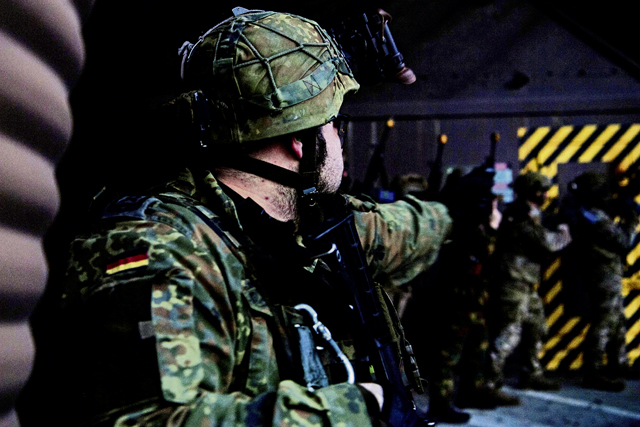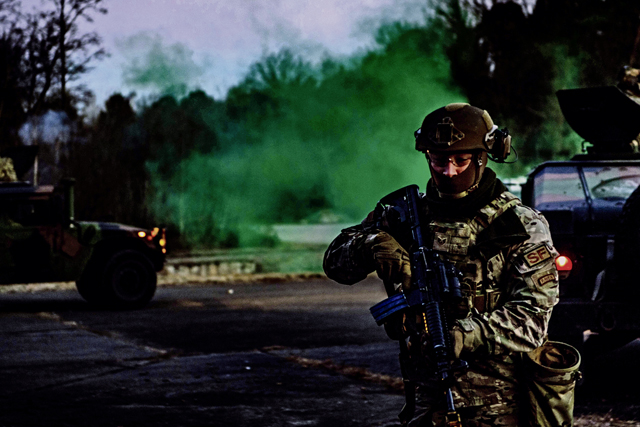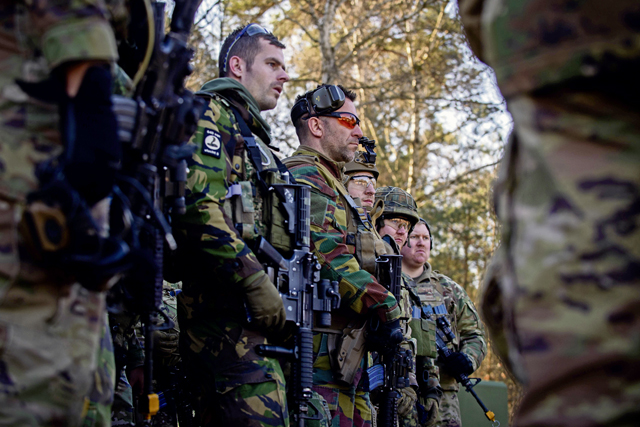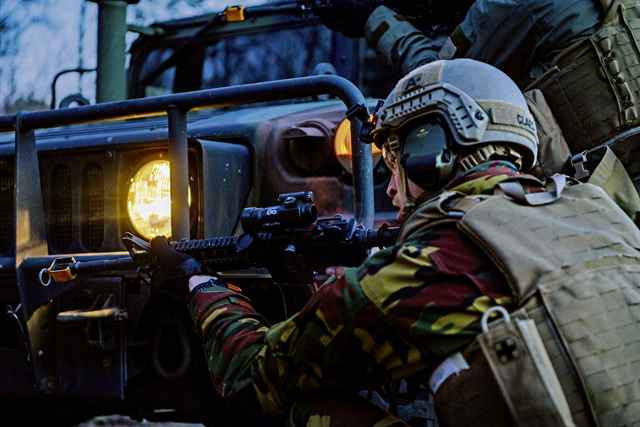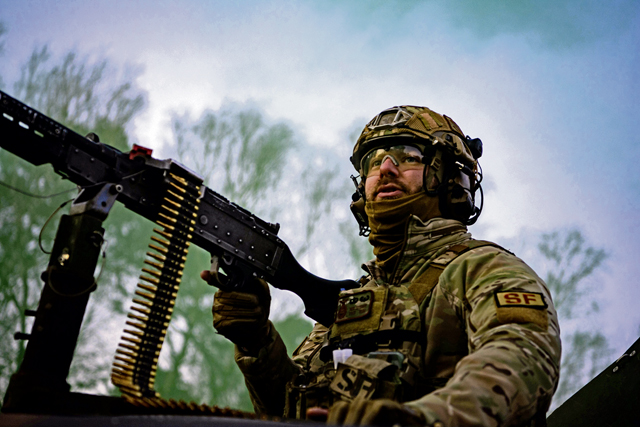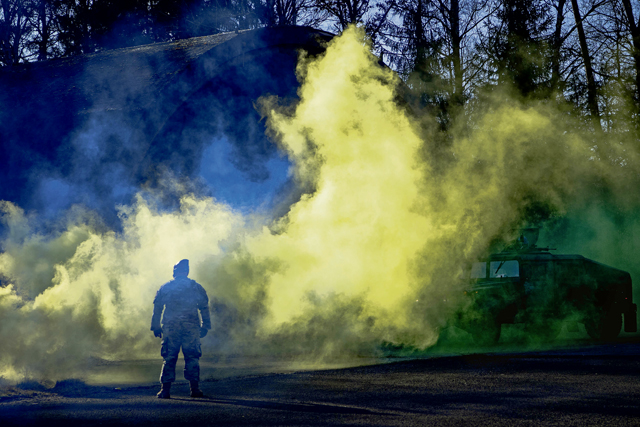
The 435th Security Forces Squadron hosted and led a tactical leaders course at Ramstein Air Base, Feb. 26 to March 1.
The U.S. Air Forces in Europe and Air Forces Africa course was designed for tactical leaders of NATO partner countries responsible for weapons security to train together in a simulated environment. The course focused on building the foundational knowledge and tactical competency to effectively secure military assets and amplify force protection. The United States, Germany, Italy, Netherlands, and Belgium sent 21 students to attend the course, which built valuable interpersonal relationships throughout the coalition
“It’s essential for NATO to participate in this course because so many of them work together,” said U.S. Air Force Staff Sgt. Christian Klima, 435th Security Force Squadron defender. “Having the members compare and contrast their standard operating procedure brings them all together.”

The ability to integrate with partners at the tactical levels allows operators to better measure their skills and combine forces to have the greatest effect in any battlespace. “Members should be adaptive to their environments as well as their battlespace,” Klima continued.
Throughout the scenario-based training, instructors prepared tailored operational environments to exercise classroom problems in a real-world environment. Each nation led a different problem set, which allowed command and control of the scenario to flow between nations while giving instructors the opportunity to evaluate their skills and effectiveness.
“The most important part of this training is to see how NATO members’ different techniques and tactics work together,” said German air force Master Sgt. Björn Große, Büchel Air Base security forces platoon sergeant. “If tactics aren’t working, a plan is constructed to correct the issue and ensure future success and a better understanding.”
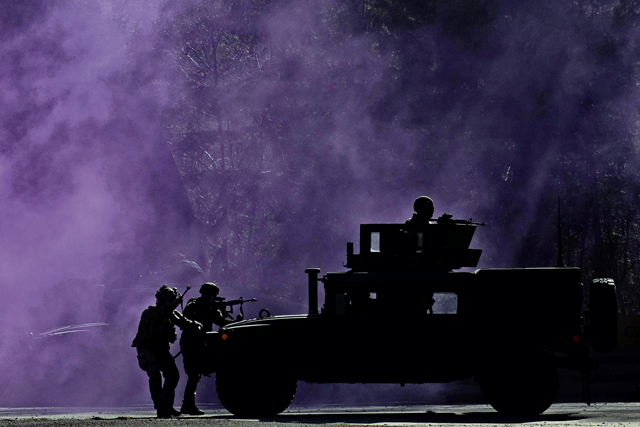
Students received instruction on breaching capabilities, advanced gunfighter tactics, close-quarters battle training, and recapture recovery training.
“Even though there are some differences in execution, NATO forces work with the same intentions,” said Große. “It is important for us to understand those differences and find a way to make it us all.”
The 435th Security Forces Squadron will continue building advanced courses to benefit the NATO coalition effectiveness of combined security forces response teams.
